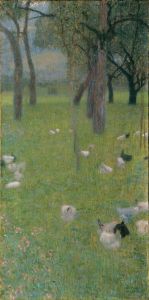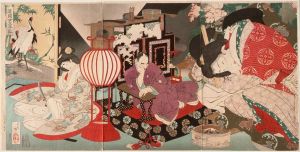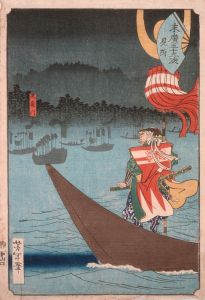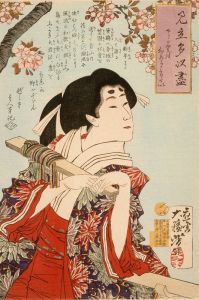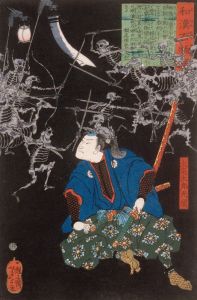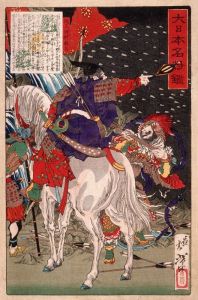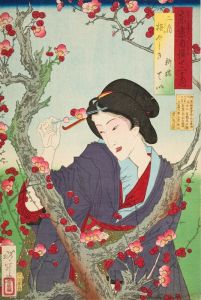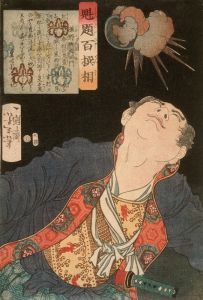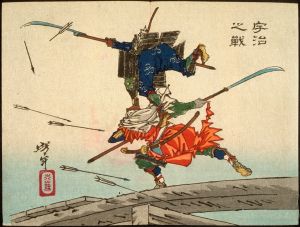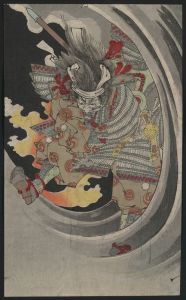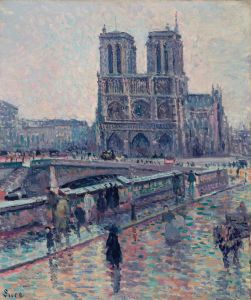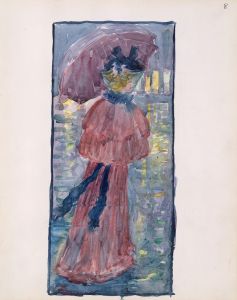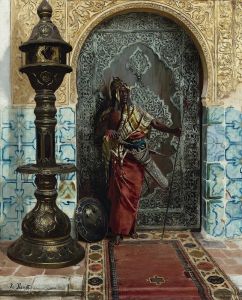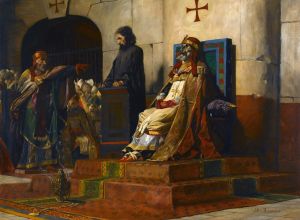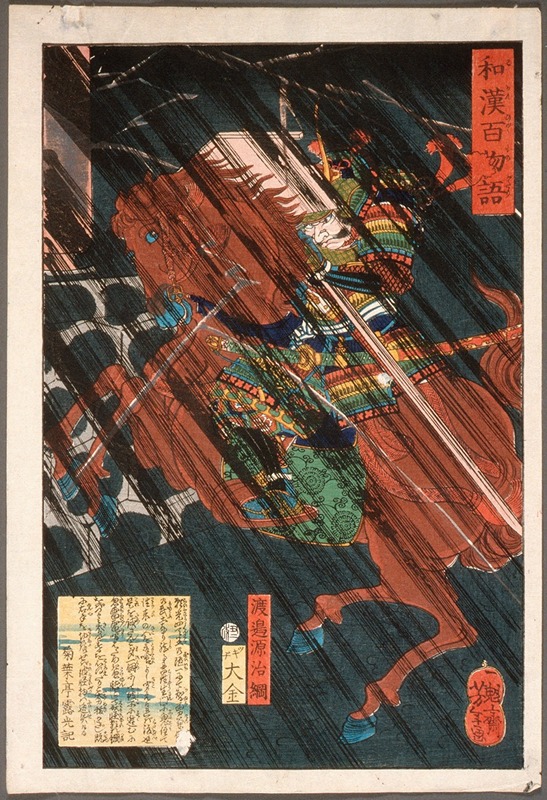
Watanabe Genji Tsuna on a Horse in the Rain
A hand-painted replica of Tsukioka Yoshitoshi’s masterpiece Watanabe Genji Tsuna on a Horse in the Rain, meticulously crafted by professional artists to capture the true essence of the original. Each piece is created with museum-quality canvas and rare mineral pigments, carefully painted by experienced artists with delicate brushstrokes and rich, layered colors to perfectly recreate the texture of the original artwork. Unlike machine-printed reproductions, this hand-painted version brings the painting to life, infused with the artist’s emotions and skill in every stroke. Whether for personal collection or home decoration, it instantly elevates the artistic atmosphere of any space.
Tsukioka Yoshitoshi (1839–1892) was a renowned Japanese ukiyo-e artist, known for his innovative and dramatic style, which played a significant role in the transition from traditional to modern Japanese art. One of his notable works is "Watanabe Genji Tsuna on a Horse in the Rain," which is part of his larger series of prints that often depict historical and legendary figures from Japanese folklore and history.
"Watanabe Genji Tsuna on a Horse in the Rain" captures the legendary samurai Watanabe no Tsuna, a retainer of the famous Minamoto no Yorimitsu (also known as Raikō). Tsuna is celebrated in Japanese folklore for his bravery and strength, particularly in tales involving supernatural elements. One of the most famous stories about Tsuna involves his encounter with the demon Ibaraki-dōji at the Rashomon gate, where he is said to have cut off the demon's arm.
In this particular artwork, Yoshitoshi portrays Tsuna riding a horse through the rain, a scene that emphasizes both the samurai's determination and the challenging conditions he faces. The depiction of rain in ukiyo-e prints is often used to convey mood and atmosphere, and in this work, it adds a dynamic and dramatic element to the composition. The rain may symbolize the adversities and obstacles Tsuna must overcome, highlighting his resilience and courage.
Yoshitoshi's style in this print reflects his mastery of capturing movement and emotion. The lines are fluid and expressive, conveying the motion of the horse and the intensity of the rain. The use of color and shading adds depth to the scene, creating a vivid and immersive experience for the viewer. Yoshitoshi was known for his ability to blend traditional ukiyo-e techniques with new approaches, and this work exemplifies his skill in creating compelling narratives through visual art.
The historical context of Yoshitoshi's work is significant, as he was active during a period of great change in Japan. The late Edo period and early Meiji era were times of modernization and Western influence, which affected all aspects of Japanese life, including art. Yoshitoshi's work is often seen as a bridge between the old and the new, preserving traditional themes while also experimenting with new styles and techniques.
"Watanabe Genji Tsuna on a Horse in the Rain" is a testament to Yoshitoshi's artistic vision and his ability to capture the essence of legendary figures. It reflects his interest in the themes of heroism and the supernatural, which were popular in Japanese culture and literature. This print, like many of Yoshitoshi's works, continues to be appreciated for its artistic merit and its contribution to the legacy of ukiyo-e art.
Overall, Tsukioka Yoshitoshi's portrayal of Watanabe no Tsuna is a striking example of his talent and creativity, offering insight into the rich tapestry of Japanese folklore and the enduring appeal of its legendary heroes.





